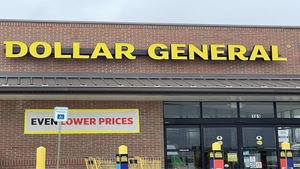Setting the Mood With NonfoodSetting the Mood With Nonfood
Retailers find profit potential in home goods, decor. How forward-thinking retailers are playing up profit potential by touting home goods, seasonal finds, beauty products, clothing, decor and pet supplies.

Grocery stores long ago transitioned from simply offering basic food items to becoming one-stop shops, giving nonfoods categories a chance to shine. Many retailers are once again turning to these categories to help enliven a struggling center store, as well as add profit to a business known for razor-thin margins.
Annual total store sales for supermarkets is about $701 billion, according to the Food Marketing Institute, Arlington, Va. Nonfoods account for about $50 billion of those sales, or 7% of annual grocery sales, according to Worcester, Mass.-based Imperial Distributors, the sum of which can be the reason why consumers choose to shop one store over another.
“Categories such as pharmacy, health and beauty with cosmetics, home and housewares, floral, clothing and accessories, pet, baby, household, and general merchandise will always serve as top necessities for consumers in the U.S.,” says Shelby Endicott, VP of nonfoods for West Des Moines, Iowa-based Hy-Vee. “This is why Hy-Vee offers a wide array of category solutions for its shoppers.”
The Midwestern retailer’s newest store, in Maple Grove, Minn., features several of these categories, including a new home, housewares and gifting department. The department features many of the products that have been shown in the pages of Hy-Vee's Seasons magazine, making it easier for shoppers of the new store to re-create the meals and tablescapes that have inspired them. Hy-Vee CEO Randy Edeker said in a local media report that the addition of the items makes it easy for customers to be inspired and more receptive to browse the aisles.
Beautify the Home
Hy-Vee isn’t the only retailer expanding its nonfoods offerings. Sendik’s recently remodeled its store in The Corners in Brookfield, Wis., to include an 8,000-square-foot second floor. The space is home to carefully curated clothing selections, an in-store dressing room, an expansive floral shop, international gourmet food selections and an array of brand-name kitchen products.
“As The Corners continues to innovate and enhance the customer experience, we’re thrilled to be taking part and elevating the shopping experience to one that has never been done before in southeastern Wisconsin,” said Ted Balistreri, co-owner of Milwaukee-based Sendik’s. “Our renovated store is so much more than a grocery store—it’s a bistro, home and clothing store, floral shop and, most importantly, community gathering space all in one.”

Photograph courtesy of Hy-Vee
Co-owner Margaret Harris also noted in a local news report that the remodeled store takes some of the “chore” out of grocery shopping and makes it fun, adding that customers can wander and look at something pretty or buy a scarf in addition to the bananas or milk they need for that day.
A big boost can also come from seasonal decor. “Our seasonal items have been the biggest focus for nonfoods on our plate,” says Denise Braby, director of home, general merchandise, health and beauty for Harmons Grocery, West Valley City, Utah. “Our decor for each holiday does amazing. It seems like we keep buying more and then just selling more.”
Clothing the Customer
Aside from home goods, clothing is becoming a bigger player in grocery stores. Hy-Vee announced this summer that it was partnering with the Joe Fresh brand to sell apparel and accessories for women, men, children and baby in several retail markets, including Des Moines, Iowa; Kansas City, Mo.; Lincoln, Omaha and Grand Rapids, Neb.; and Minneapolis and Rochester, Minn.
The Joe Fresh store-within-a-store concept comes two years after Hy-Vee’s groundbreaking partnership with F&F, a fast-fashion retailer known in central Europe and Asia and sold in Tesco stores. Joe Fresh, a Canada-based brand, also is sold in 350 Loblaw and 1,300 Shoppers Drug Mart locations throughout Canada as well as in its own retail stores.
“Quality clothing, accessories, footwear and beauty will always serve as a top need for the American consumer, which is why we’ve made these solutions available to our shoppers,” Darren Baty, EVP of nonfoods for Hy-Vee, said in a press release. “Hy-Vee’s goal is to provide its customers the very best in all lifestyle categories in a convenient and easy-to-shop format.”
He said the transition to Joe Fresh was made to provide a “larger product diversity with Midwestern styles that we believe will be appealing to the Hy-Vee shopper.” This course correction should address several issues American consumers had with the F&F brand, namely sizing disparities between the U.S. and Europe and styles that are more in line with customers wanting well-made, affordable basics.
Beautify the Customer
Hy-Vee has also made an extended push into beauty. The new Maple Grove store, as well as several other stores, features a large selection of Basin products, a brand that specializes in all-natural bath and body products. Beauty experts are also on hand to help take out the guesswork for customers and help them find their favorite Basin bath bombs, soap, shampoo and conditioner bars, as well as other body products, including men’s and women’s fragrances. Customers also can mix their own bath salts to create custom fragrances. A variety of other high-end cosmetics and fragrance brand offerings also are available.
Pets as People
But it’s not just humans being spoiled. Retailer such as Meijer are devoting a lot of floor space to pampering pets. This fall, the Grand Rapids, Mich.-based retailer announced it was expanding its selection of everyday essentials, including food, grooming supplies and increasingly popular pet costumes, especially for Halloween.
“Pets are integral members of our customers’ families, and we are working diligently to ensure our pet departments remain top of mind for those fun celebrations but also for their total pet care needs,” Shana Ward, director of pets merchandising for Meijer, said in a release.
All 246 Meijer locations expanded the departments by an aisle to make room for additional pet food items, and 40 stores relocated the pet department to a back corner of the store, enabling the retailer to offer a specialty store-like feel with spacious displays. These stores are devoting 30% more space to the department than previously.
Consumers devotion to their pets is big business, with pet sales raking in $20 billion, and dollar growth in the pet care category has been twice that of the overall center store growth, according to New York-based Nielsen. Pets can also generate more trips to the store: Fifty-seven percent of pet care category purchases trigger a trip to the store. While other pet purchases might generate more excitement, pet food is the clear winner across key metrics such as dollar size, sales growth and compound annual growth rate (within pet care, pet food and treats represent 60% of the total pet care category). More specifically, superpremium pet foods are the real growth drivers, according to Nielsen data reported in The Cambridge Group’s report Identifying & Capturing “Real Growth” at Retail: The Super Premium Pet Opportunity.
“We are always trying to find unique brands that can differentiate us and build sales,” says Michael Arbuckle, grocery sales director for Harmons Grocery. “We see the most potential in the pet category. More and more people are looking for products for their pets, mostly treats.”
Checkout Opportunity
While nonfoods are traditionally merchandised in center store, the checkout area is not to be dismissed. As part of its program to make checkouts more healthful, Harmons Grocery has dedicated space at checkout aisles for nonfood products. “Harmons dedicates two check stands in each store to nonfood items,” Braby says. “One side of the Healthy Checkout Lanes are specifically nonfoods. The items that do the best are lip balms, breath fresheners, toothpicks, batteries, phone accessories, hand sanitizer and small lotions.”
With the correct assortment, nonfood categories can be a winner for food retailers. “Nonfood categories have diverse product assortment and appeal to a wide demographic,” says Endicott of Hy-Vee. “The excitement will always be in finding a way to provide solutions that appeal to all shoppers, and then communicating those solutions to the appropriate audience.”
About the Author
You May Also Like






